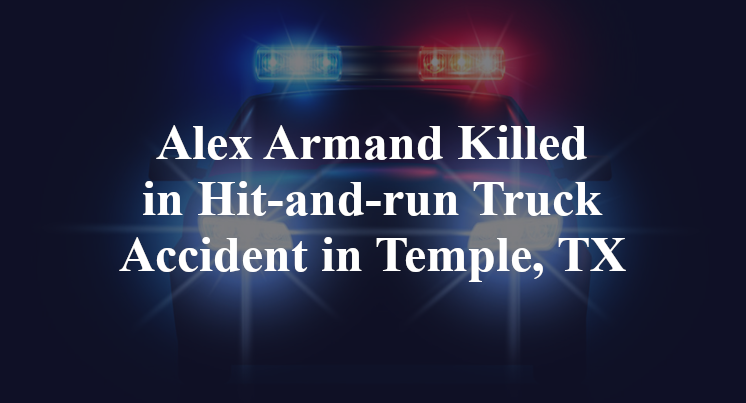Alex Armand Killed in Hit-and-run Truck Accident in Temple, TX
Bell County, TX — October 8, 2025, Alex Armand was killed in a pedestrian versus hit-and-run truck accident along Interstate Highway 35.
According to authorities, 45-year-old Alex Armand was on foot attempting to cross the southbound lanes of I-35 in the vicinity of South 57th Street when the accident took place.

Officials indicate that, for as yet unknown reasons, Armand was struck by a southbound 18-wheeler. Armand reportedly sustained fatal injuries due to the collision and was declared deceased at the scene.
The truck allegedly fled the scene, the 32-year-old Laredo man inside failing to stop and render aid of any sort to the victim. The truck driver did eventually stop in the vicinity of Salado; reports state that he has been arrested and is facing charges of Failure to Stop and Render Aid Involving Person Injury or Death.
Additional details pertaining to this incident are not available at this point in time. The investigation is currently ongoing.
Commentary
When a truck driver leaves the scene of a fatal crash, it raises a serious legal question that goes beyond the initial impact: Why didn’t he stop? Regardless of how the collision happened, failing to remain at the scene and render aid is not just a violation of law—it’s a failure of basic human responsibility. That choice alone will likely carry significant criminal and civil consequences.
But that still leaves us with an important and more complicated question: What led to the crash itself? The fact that the victim was on foot along a busy interstate complicates matters, but it doesn’t automatically mean the truck driver isn’t at fault. Pedestrian crashes on highways often involve reduced visibility, distracted driving, fatigue, or poor lighting. Without dash cam footage, ECM data, and driver phone records, there’s no way to know what the driver saw—or should have seen—in the moments before impact.
And even if the driver didn’t see the pedestrian until it was too late, investigators should ask whether his company put him in a position to fail. Was he driving too many hours? Was he on a route not suited for the conditions or time of day? Did the truck have functioning forward-facing cameras or pedestrian detection systems? These details can shift how we understand not just what happened, but who’s ultimately responsible.
In my experience, the presence of criminal charges—especially for leaving the scene—can sometimes overshadow the need for a broader civil investigation. But the two aren’t interchangeable. Criminal charges may penalize one act; a civil investigation looks at the whole chain of decisions that led to the crash.
Key Takeaways:
- The driver’s decision to flee the scene raises serious legal and moral concerns, regardless of fault in the initial collision.
- It remains unclear whether the truck driver could have avoided hitting the pedestrian.
- Dash cam footage, ECM data, and driver phone records will be critical in assessing what the driver saw and did.
- Company policies around routing, rest, and equipment should also be investigated.
- A full understanding of liability requires more than criminal charges—it requires a thorough civil investigation into all contributing factors.

“These are essential reads for anyone dealing with the aftermath of a truck wreck”– Attorney Cory Carlson